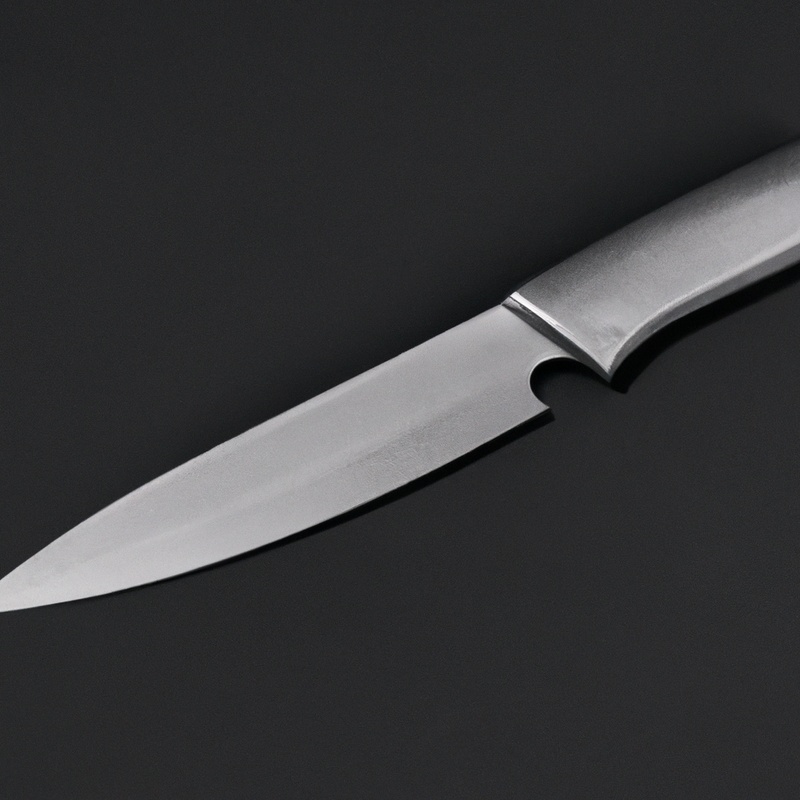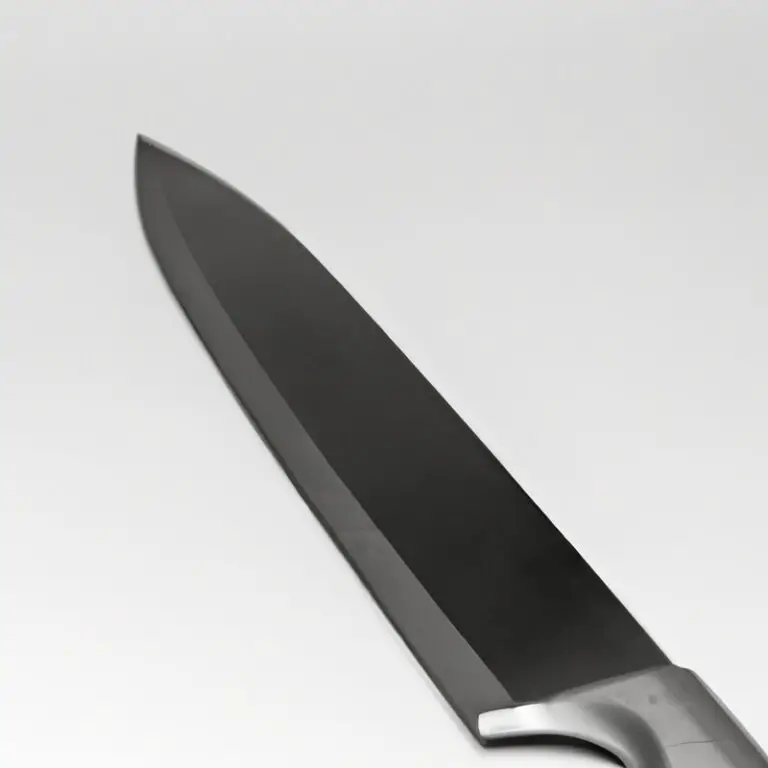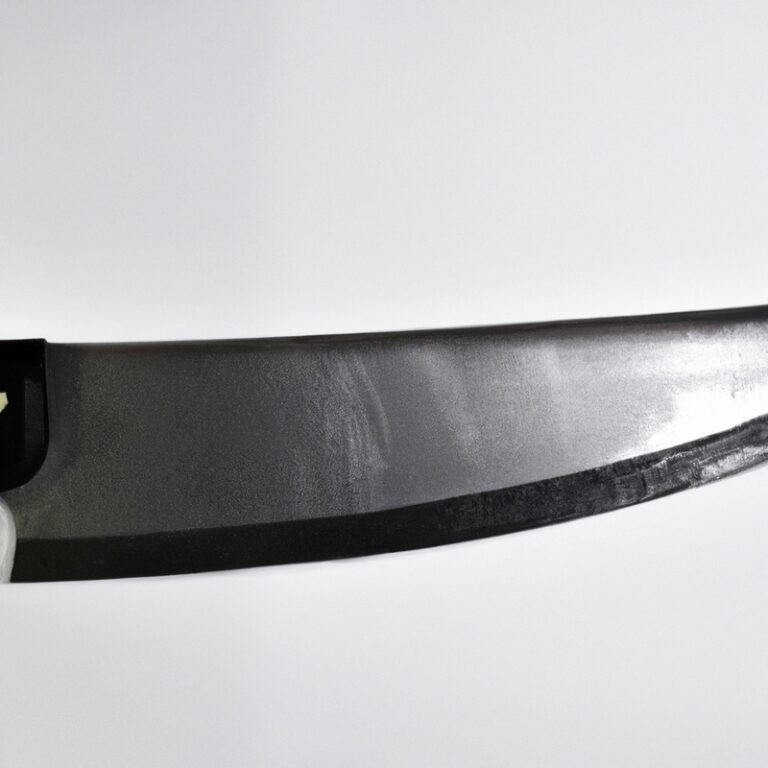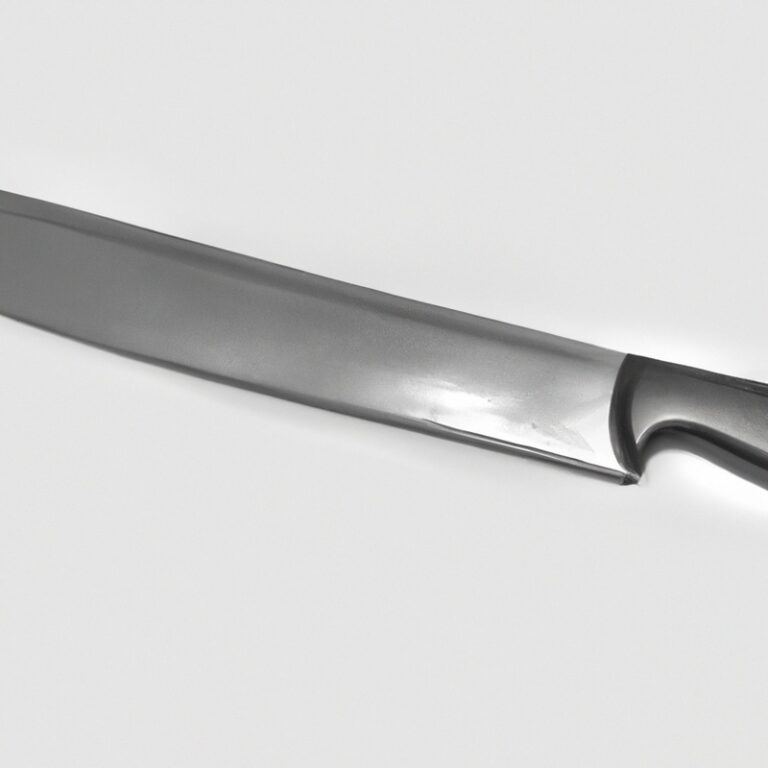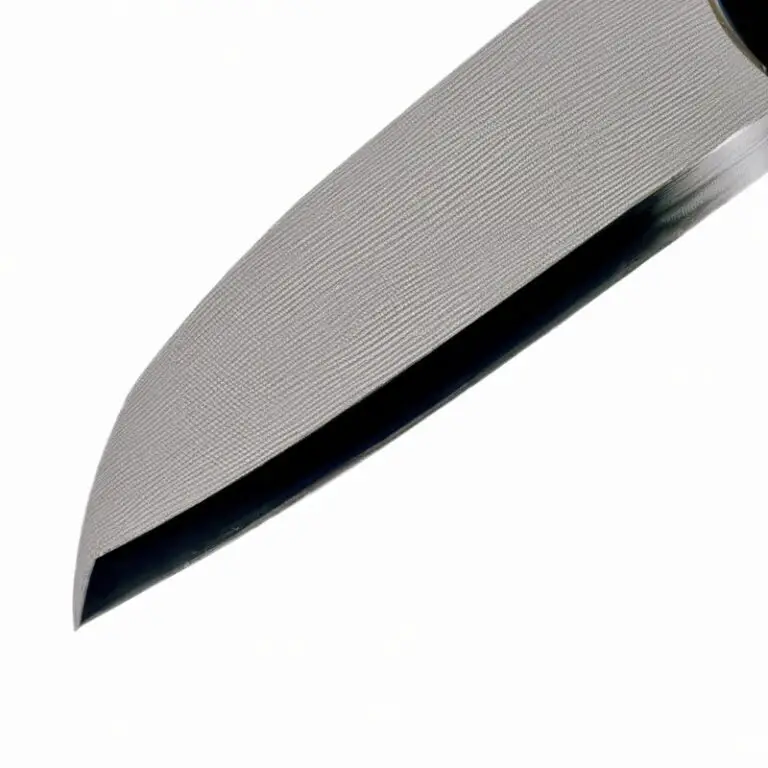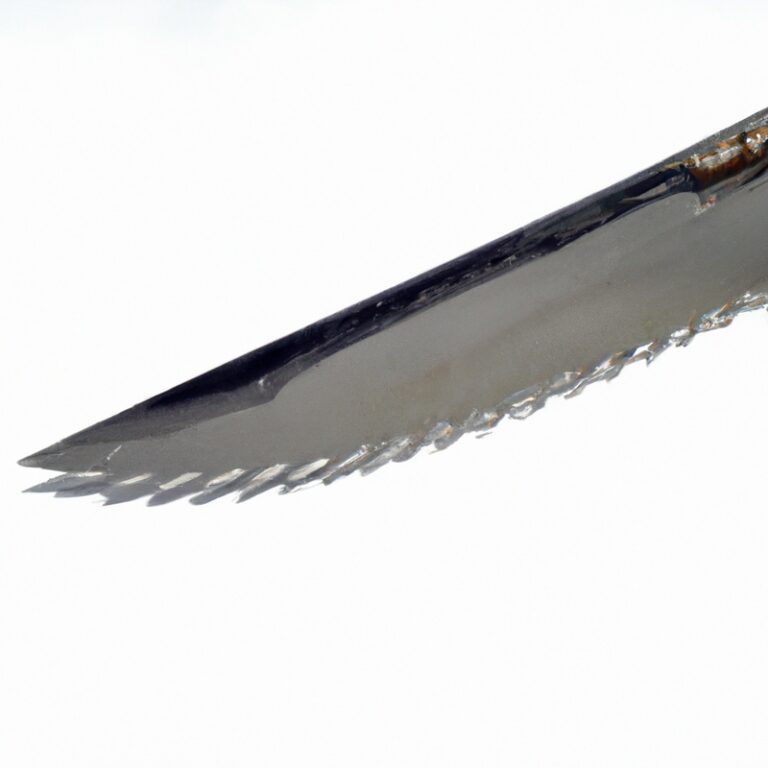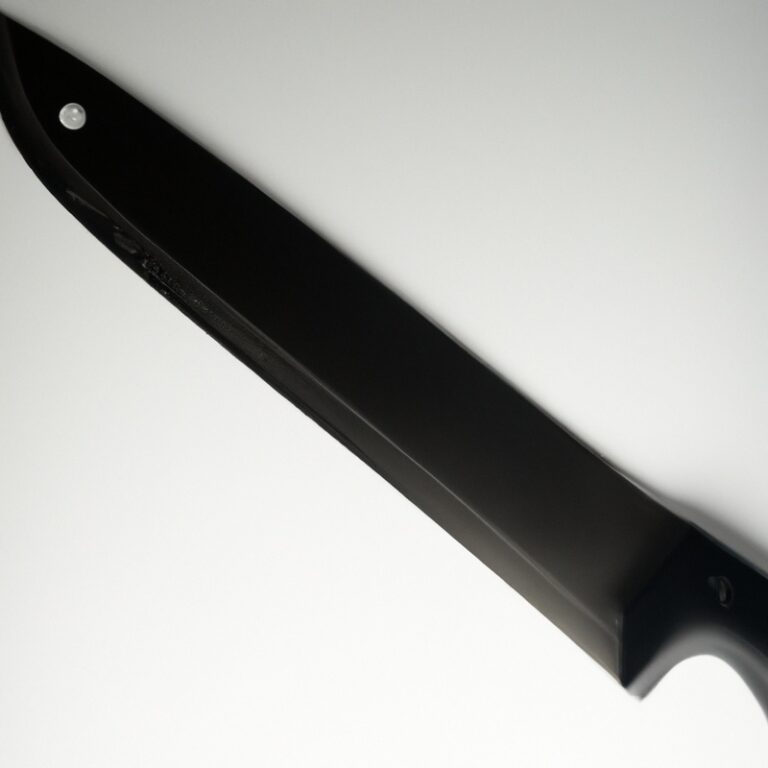What Are The Key Factors To Consider When Maintaining The Edge Of a Serrated Knife?
Key Takeaways:
- Proper sharpening technique is critical for maintaining the edge of a serrated knife.
- Regular cleaning and drying of the knife is essential to prevent corrosion.
- Avoid using abrasive materials or dishwasher for cleaning the serrated knife.
- Storing the knife in a safe and dry place helps prevent damage to the edge.
Are you frustrated with dull serrated knives that struggle to cut through even the softest bread? Don’t worry, friend, I’ve got you covered.
In this article, we’re diving into the fascinating world of serrated knives and exploring the key factors to consider when maintaining their edge.
From understanding the different types of serrated knives to uncovering the importance of keeping them sharp for optimal cutting performance and safety, we’ll cover it all. Plus, I’ll share valuable tips on frequency of sharpening, sharpening methods, proper knife storage, and more.
You’ll be slicing through crusty baguettes like a pro in no time! So, let’s embark on this serrated knife journey together to keep our blades razor-sharp.
Are you ready? Let’s go!
| Factors | Considerations |
| Frequency of use | Using a serrated knife more frequently may require more regular maintenance. |
| Storage | Proper storage, such as in a knife block or sheath, can help protect the serrated edge from damage. |
| Cleaning | Ensure the knife is thoroughly cleaned after each use to avoid any buildup that may affect the edge. |
| Sharpening tools | Choose appropriate sharpening tools specifically designed for serrated knives. |
| Technique | Use proper cutting techniques to minimize damage to the serrated edge. |
Understanding Serrated Knives
What are Serrated Knives?
Serrated knives are a type of knife that features a specially designed blade with small, pointed teeth along the edge. These teeth resemble saw teeth and are what give serrated knives their unique cutting ability.
The teeth of a serrated knife enable it to grip and tear through tough materials, making it ideal for slicing through bread, fruits with tough skins, and delicate items such as tomatoes without crushing them.
Serrated knives are a versatile tool to have in the kitchen and are also commonly used in outdoor activities such as camping or survival situations.
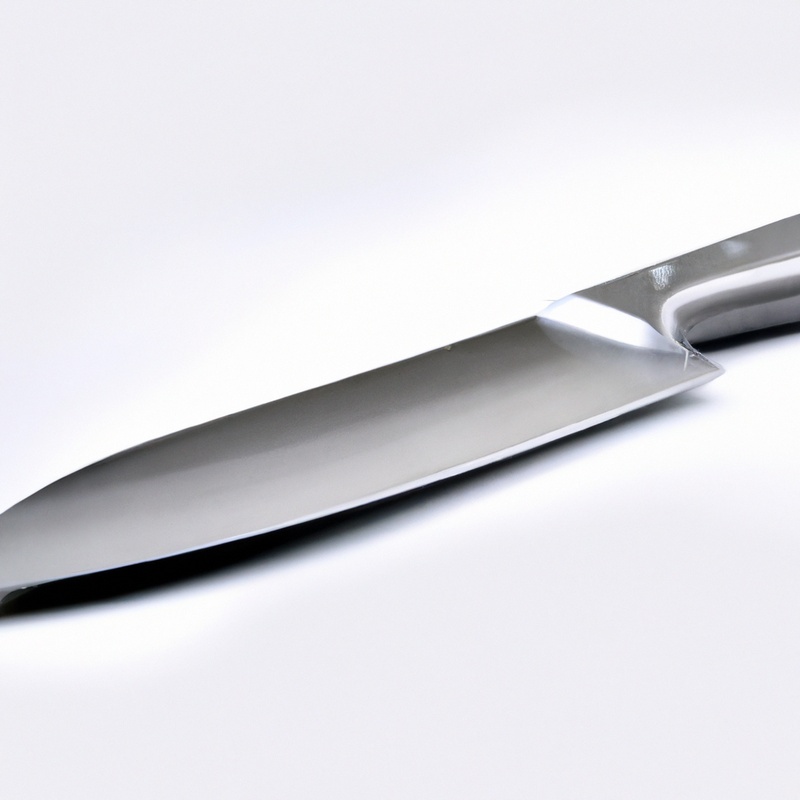
Types of Serrated Knives
Types of Serrated Knives:
- Bread Knife: Designed to slice through bread without crushing it, these knives have long, scalloped edges.
- Tomato Knife: With small, pointed serrations, these knives are perfect for cutting through tomato skins without squishing the flesh.
- Steak Knife: Often found in steakhouse settings, these knives have sharp serrations that easily glide through meat.
- Utility Knife: Versatile and handy, utility knives have medium-sized serrations that can handle a wide range of tasks.
- Offset Serrated Knife: This type of knife has a curved, offset handle that allows for comfortable cutting and more precision.
- Cheese Knife: Designed specifically for slicing through cheese, these knives have unique serrations that prevent sticking.
- Paring Knife: Paring knives with serrated edges are ideal for tasks that require delicate precision, such as peeling fruits or trimming vegetables.
Remember, each type of serrated knife is tailored for specific tasks and should be used accordingly.
Importance of Maintaining the Edge
Cutting Performance
Cutting performance is a key factor to consider when maintaining the edge of a serrated knife. The sharpness of the knife directly affects its ability to cut through different types of food.
A sharp edge ensures clean and precise cuts, while a dull edge can result in tearing and crushing.
To enhance cutting performance, regular sharpening is essential. Using the right tools and techniques can help maintain a sharp edge.
Additionally, honing the edge and proper knife storage can also contribute to optimal cutting performance.
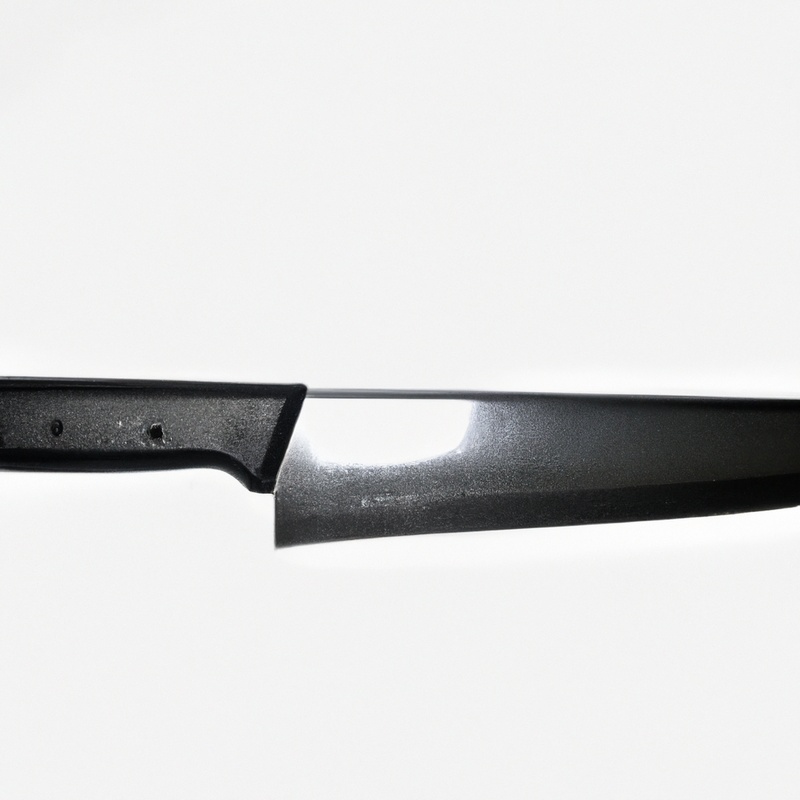
Safety
Safety is a crucial consideration when maintaining the edge of a serrated knife. The sharp teeth on a serrated knife pose a higher risk of injury if not properly maintained.
To ensure safety, always handle the knife with care and avoid applying excessive force while using it.
Regularly sharpen the knife to maintain its cutting performance and reduce the risk of slippage. Proper storage, such as using protective sheaths or knife blocks, also minimizes the chance of accidental cuts.
By prioritizing safety, you can enjoy the benefits of a well-maintained serrated knife without compromising your well-being.
Factors to Consider when Maintaining the Edge of a Serrated Knife
Frequency of Sharpening
Sharpening a serrated knife at the right frequency is essential to maintain its cutting performance. Unlike straight-edge knives, serrated knives don’t need frequent sharpening.
You typically only need to sharpen them once every 6-12 months, depending on how often you use them.
This is because serrated knives rely on the scalloped edges to do the cutting, rather than a single sharp edge. Over-sharpening can actually damage the serrated edges, so it’s important to avoid sharpening them too often.
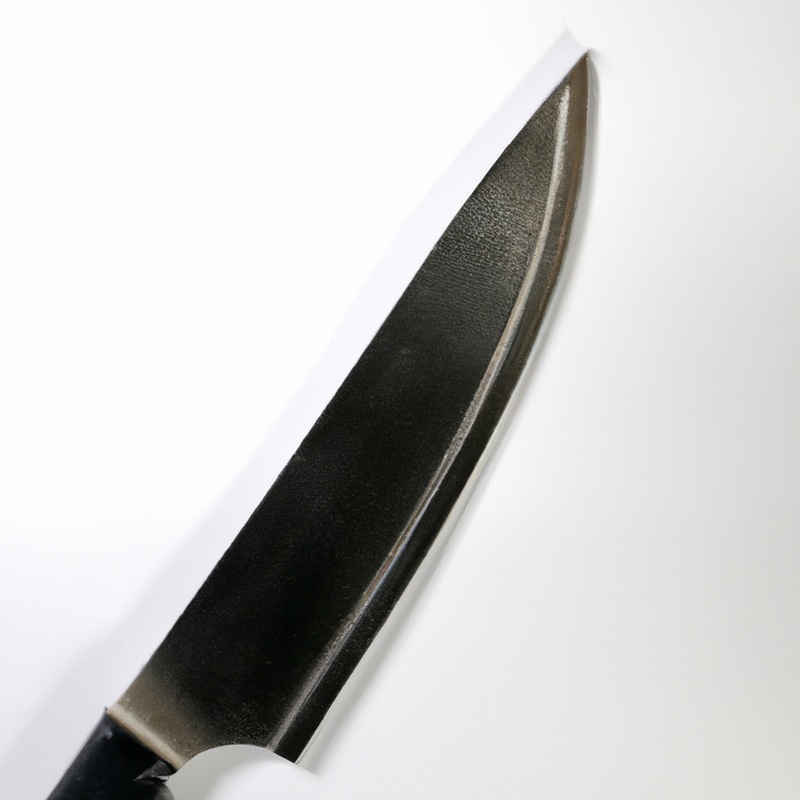
Sharpening Methods
When it comes to sharpening a serrated knife, there are a few methods you can use. One option is to use a serrated knife sharpening tool specifically designed for these types of blades.
These tools have grooves or rods that match the serrations, allowing you to sharpen each individual tooth.
Another method is to use a sharpening stone or a diamond file. With these tools, you can sharpen the edges by carefully running the stone or file along the serrations.
Whichever method you choose, it’s important to be gentle and maintain a consistent angle.
Avoid using excessive force, as this can damage the knife.
Sharpening Tools
When it comes to sharpening tools for a serrated knife, there are a few key options to consider. Firstly, a ceramic rod or sharpening stone with a triangular shape is great for maintaining the sharpness of individual serrations.
Another option is a serrated knife sharpener specifically designed for serrated blades.
These typically have a tapered shape to match the angle of the serrations. Lastly, a honing guide can be used to keep the entire edge aligned and sharp.
Experiment with different tools to find the one that works best for you.
Correct Techniques
When it comes to maintaining the edge of a serrated knife, using correct techniques is essential. First, make sure to use a sharpening tool specifically designed for serrated knives.
Gently slide the tool along the serrations, being careful not to apply too much pressure.
Repeat this process until the edge feels sharp. Another effective technique is honing the edge.
Use a honing tool with a rod that matches the size of the serrations.
Hold the tool at a 20-degree angle and run it along the edge, focusing on each individual serration. Proper knife storage is also necessary.
Use a protective sheath to prevent the serrations from getting damaged.
Alternatively, store the knife in a knife block or on a magnetic strip, keeping it away from other utensils that could dull the edge.
Honing the Edge
Honing the edge of a serrated knife is essential for maintaining its cutting performance. To hone the edge, you will need a serrated knife sharpening tool.
This tool has a special design to fit the grooves of a serrated blade.
Simply run the tool along the edge, following the serrations. Repeat this process regularly to keep the edge sharp.
Honing helps realign the tiny teeth on the edge, ensuring efficient cutting.
Remember to use gentle pressure and avoid excessive force that may damage the blade.
Honing Tools
When it comes to maintaining the edge of a serrated knife, honing tools play a crucial role. Honing tools are specifically designed to realign and straighten the microscopic teeth on the edge of the serrated blade.
One commonly used honing tool is a ceramic honing rod or a sharpening stone with a rounded edge.
By gently running the honing tool along the serrated edge, you can restore its sharpness and improve cutting performance. Remember to use light pressure and maintain a consistent angle while honing.
Regular honing will help keep your serrated knife in optimal condition.
How often to Hone
Honing your serrated knife regularly is essential for maintaining its sharpness and cutting performance. When it comes to how often to hone, it mainly depends on how frequently you use your knife.
As a general rule, I recommend honing your serrated knife every 2-3 months under regular use.
However, if you use your knife more frequently, you may need to hone it more often, perhaps once a month. Remember, honing helps realign the teeth of the serrated blade and keeps it cutting smoothly.
So, be sure to check the sharpness of your knife regularly and hone as needed to keep it in top condition.
Proper Knife Storage
Proper knife storage is essential for maintaining the edge of a serrated knife. Here are some tips to keep in mind:
- Use protective sheaths: When storing your serrated knife, always make sure to use a protective sheath. This will help prevent accidental damage to the edge and maintain its sharpness.
- Knife blocks or magnetic strips: Consider storing your serrated knife in a knife block or on a magnetic strip. These options provide a safe and convenient storage solution while keeping the knife edge protected.
- Avoid cluttered drawers: Avoid storing your serrated knife in a cluttered drawer where it can come into contact with other utensils or hard surfaces. This can cause damage to the edge and compromise its sharpness.
Remember, proper knife storage plays a crucial role in maintaining the edge of a serrated knife and ensuring its longevity. By implementing these storage tips, you can keep your knife sharp and ready for slicing through any task.
Protective Sheaths
Protective sheaths are an essential accessory for maintaining the edge of a serrated knife. They provide a barrier between the blade and other objects, preventing accidental damage and dulling.
When not in use, placing the knife in a protective sheath helps to keep it safe from scratches and knocks.
It also reduces the risk of injury when retrieving or storing the knife. Protective sheaths are available in various materials such as plastic, leather, or nylon, and they are designed to fit the specific size and shape of the serrated knife for maximum protection.
Knife Blocks or Magnetic Strips
When it comes to storing your serrated knives, you have two main options: knife blocks or magnetic strips. Both have their advantages.
Knife blocks are a classic choice, providing a stable and organized storage solution.
They also offer protection for the blades, preventing them from becoming dull or damaged. On the other hand, magnetic strips are a space-saving option that allows you to display your knives while keeping them easily accessible.
They also make cleaning a breeze since there are no slots or crevices for food particles to get trapped in.
Ultimately, the choice between knife blocks and magnetic strips is a matter of personal preference and the amount of counter space you have available.
Cleaning and Drying
Cleaning and drying your serrated knife is essential for maintaining its edge and preventing damage. Use mild dish soap and warm water to clean the blade, taking care to remove any food particles or debris.
Avoid using abrasive materials or harsh chemicals that can scratch or corrode the knife.
After cleaning, thoroughly dry the knife with a clean towel to prevent moisture buildup and the potential for rust. Storing the knife in a dry and safe place will also help preserve its edge and ensure longevity.
Avoiding Excessive Force
When using a serrated knife, it’s important to avoid applying excessive force. Here are a few tips to help you with this:
- Let the knife do the work: Don’t push down forcefully. Instead, use a gentle sawing motion to cut through food.
- Choose the right knife for the task: Select a serrated knife that is appropriate for the size and type of food you’re cutting. Using the correct knife will reduce the need for excessive force.
- Maintain a steady grip: Hold the knife firmly but avoid gripping it too tightly. This will help you maintain control and prevent the need for excessive force.
- Take breaks if needed: If you find yourself needing to exert excessive force, it may be a sign that the knife needs sharpening or honing. Take a break and tend to the knife before continuing.
Remember, using excessive force can not only damage the knife but also increase the risk of accidents. So, take it easy and let the serrations do the work for you.
Final Verdict
Maintaining the edge of a serrated knife is crucial for both cutting performance and safety. Factors to consider include the frequency of sharpening, the use of appropriate sharpening tools and techniques, honing the edge regularly, proper knife storage, and following maintenance tips such as cleaning and avoiding excessive force.
By taking these factors into consideration, you can ensure that your serrated knife remains sharp and reliable for years to come.
Remember, a well-maintained serrated knife is not only a pleasure to use but also a tool that you can trust in the kitchen.

